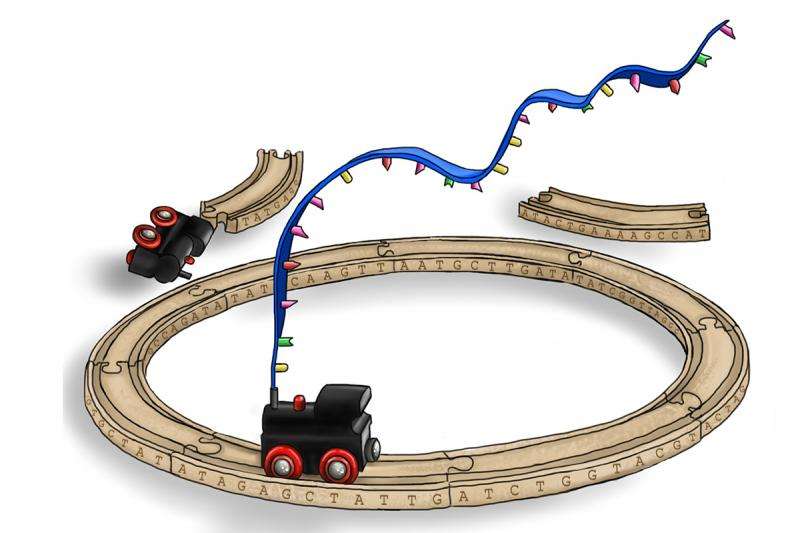Researchers discover unique DNA editing function

A species of unicellular ciliate has found a special trick to make use of the cellular machinery in seemingly impossible ways. Researchers at the University of Bern have for the first time described a mechanism in detail how so-called "junk DNA" is transcribed before being degraded – and this mechanism is remarkably clever.
It sounds a bit like the winning proposal in a design contest: How can small pieces of information be read when they are too short to fit into the reading apparatus? Stitch them together into a longer string and close the string to produce a handy loop that can even be read off repeatedly. That's how a little organism called Paramecium tetraurelia, a species of unicellular ciliate, organises the transcription of small excised DNA segments into RNAs, which have a regulatory function.
But the story actually goes the other way round: When Mariusz Nowacki from the Institute of Cell Biology of the University of Bern found small RNAs with a regulatory function in the elimination of segments out of paramecium DNA, he and his team started to investigate the molecular mechanisms – where do these RNAs come from, and what exactly is their role? They soon found out that there seems to be a sort of a feedback loop in the deletion of DNA segments. These, previously thought to be useless pieces of DNA, are cut out of the genome and then degraded by the cell machinery. However, before degradation, they serve as templates for small RNAs which in turn help with cutting out more of these DNA pieces. Once started, this pyramid system keeps reinforcing itself, via the production of RNA.
Transcribing the non-transcribable
As beautiful and intriguing as this system seemed to be, the researchers were left with a serious problem: Usually, the cellular transcription mechanism needs a much longer piece of DNA to operate. So how could these small excised DNA pieces – of the length of not even 30 base pairs – be used as templates? Without a good explanation for this, the whole theory looked very implausible. "It was an interesting detective work," Nowacki remembers. They had a suspect – all they needed was to pin it down. "We were not actually looking for the unknown, because we soon had an idea, and then it was all about testing that idea." And their guess proved to be right: Paramecium has figured out a way to stitch DNA pieces together randomly into strings and, once the strings have the right length (of about 200 base pairs), to connect the ends and form circular concatemers of DNA segments.
Junk or not junk?
The finding has interesting implications: DNA thought to be non-coding "junk" – of no use for the organism whatsoever and degraded quickly after being removed from the genome –is actually a functional template for a biologically important class of small RNAs. It is actually one of the big emerging fields in molecular biology, whether "junk" DNA is really worthless or rather, as is increasingly becoming clear, whether it actually has regulatory functions. Nowacki believes that in this work his group was for the first time able to pin down a precise mechanism for the transcription of deleted "junk DNA"– which would strengthen the case for an inevitable name change.
RNA & Disease – The Role of RNA Biology in Disease Mechanisms
The research group studies a class of molecules that has long been neglected: RNA (ribonucleic acid) is pivotal for many vital processes and much more complex than initially assumed. For instance, RNA defines the conditions, in a given cell, under which a given gene is or is not activated. If any part of this process of genetic regulation breaks down or does not run smoothly, this can cause heart disease, cancer, brain disease and metabolic disorders.The NCCR brings together Swiss research groups studying different aspects of RNA biology in various organisms such as yeast, plants, roundworms, mice and human cells. Home institutions are the University of Bern and the ETH Zurich.
More information: Sarah E. Allen et al. Circular Concatemers of Ultra-Short DNA Segments Produce Regulatory RNAs, Cell (2017). DOI: 10.1016/j.cell.2017.02.020
Journal information: Cell
Provided by University of Bern


















